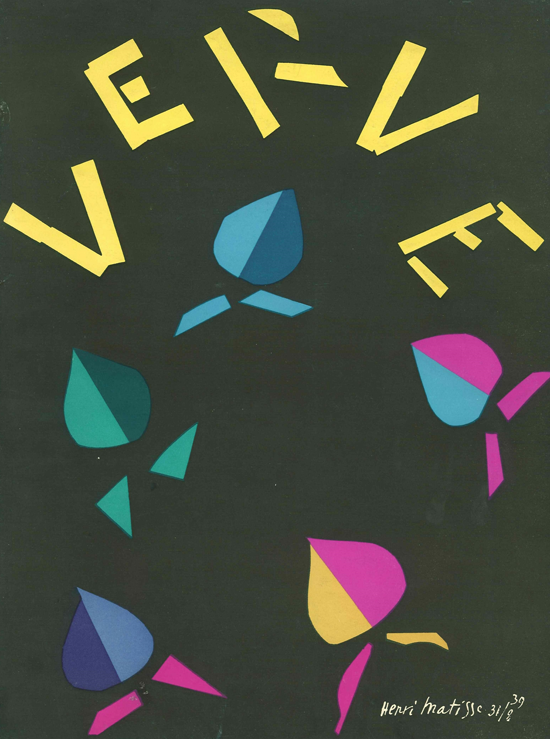Matisse's Verve
Today we look at heroism through cut paper. The University of Houston presents this series about the machines that make our civilization run, and the people whose ingenuity created them.
The French Resistance against Nazi Germany during World War II took many forms, and I hold in my hands one of the strangest. I marvel at its beauty and the persistence of those who brought it into being. It's an old issue of a French art magazine. How could that be heroic? The answer begins to emerge when we open it to find that it was published in June 1940, the same month the Germans marched into Paris. Work on the issue started during the ominous summer before, as the world waited to see if Hitler would respect the Munich Agreement. The magazine's editor, Efstratios Tériade, commissioned the artist Henri Matisse to design the cover.The aging artist, with anxiety fueled by memories of WWI, regularly visited Tériade's Paris office. The brightly-colored sample pages for printer's inks caught his eye. He spent hours cutting shapes from the paper and arranging them in different patterns, finally settling on abstract leaf-shaped pieces. Matisse completed his design just days before Germany invaded Poland, and the machinery of a worldwide war clanked into motion.
Matisse's cover evokes the terror of encroaching war. A stark black background surrounds the blues, greens, and purples of the leaves and knocks the yellow letters of the magazine's title asunder. But art and life triumph here, for the colors appear even more intense next to the deep black, and the scattered letters of the title are still legible 'V-E-R-V-E.' Pronounced [vərv] in French, the same word exists in English, verve [vûrv]. Definitions include 'vitality, liveliness, spirit, and zest.' These are the antithesis of war, just as Matisse's colored leaves are.
Tériade managed to pull the rest of the issue together over the next few months. Illustrations by the artists Picasso, Brock, and Matisse presented the dynamic art of pre-war France. Matisse's cover proved to be the most excruciating to print. Each copy had to be run through the press twenty-six times, once for each of Matisse's colors, but the result stuns us with it's vibrancy.

Verve, No. 8 (September – November 1940). Paris: Editions de la Revue Verve, 1940. Cover lithograph by Henri Matisse, Printed by Mourlot Frères. (Courtesy of the Hirsch Library, Museum of Fine Arts, Houston.)
Matisse could have left France before the Germans arrived,for one of his sons lived in New York. But, at age 70, he chose to remain and to work. In ill health and too weak to stand or paint, he continued the paper-cutting technique he had used in Tériade's office and created a series of masterpieces, including the images that would become the book titled Jazz. While his daughter Marguerite and son Jean fought in the Resistance, Matisse fought in his own way, by producing art that celebrated life, color, and freedom. When he wrote Tériade about his work on the cover, he said ''I, too, have my nerve.' This magazine issue embodies both the nerve and the verve of Tériade and Matisse.
I'm Margaret Culbertson, from the Museum of Fine Arts, Houston's Bayou Bend Collection, where we too are interested in the way inventive minds work.
(Theme music)
Spurling, Hilary. Matisse the Master: A Life of Henri Matisse: The Conquest of Colour, 1909-1954. New York: Alfred A. Knopf, 2005.
Di Crescenzo, Casimiro. Matisse and Tériade: Collaborative Works by the Artist and Art Publisher. New York: Yoshii Gallery, 1997.
Anthonioz, Michel. Verve: The Ultimate Review of Art and Literature (1937-1960). New York: Harry N. Abrams, Inc., [YEAR]
Henri Matisse: The Cut-Outs. New York: The Museum of Modern Art, 2014.
In Houston, one may make arrangements to view this issue of Verve by calling the Hirsch Library, Museum of Fine Arts, Houston, 713-639-7325.
This episode first aired on October 31, 2014.